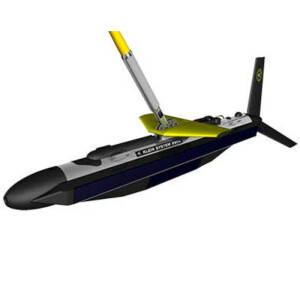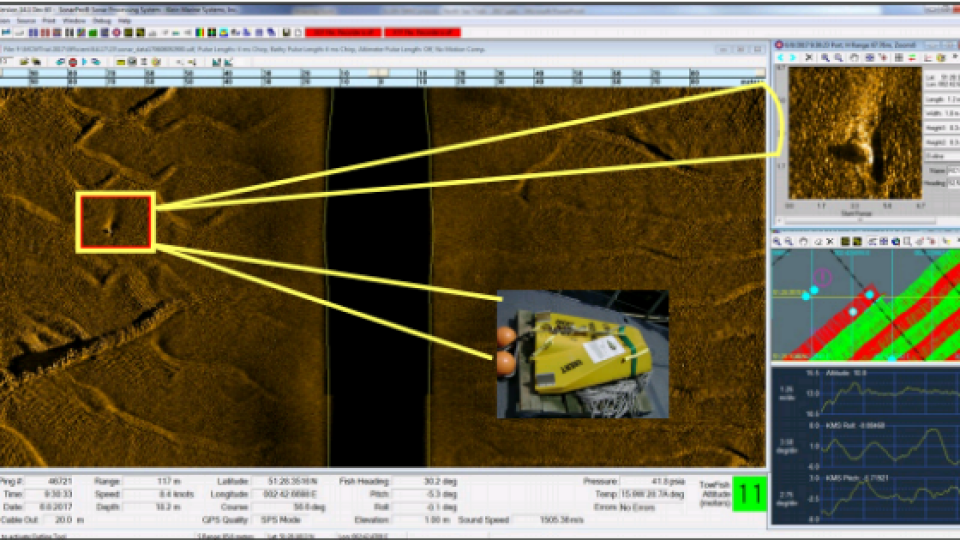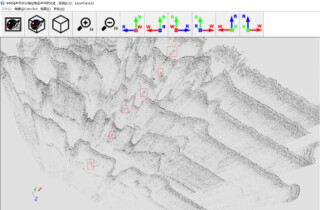
Unmanned Mine Hunting Exercise, Zeebrugge (Belgium)
In June 2017, the Belgian Navy and NATO-CMRE hosted the North Sea Unmanned MCM Trials. This exercise was an assessment of the ability for commercial off-the-shelf (COTS) autonomous systems to perform mine countermeasure tasks. The activities took place outside of the Zeebrugge Belgian Navy Base. The trial was open to the participation of autonomous underwater and surface systems (e.g.,AUV, USV).
All vehicles were required to perform autonomously in a challenging
environment populated with realistic mine-like targets including
cylindrical, MANTA, ROCKAN and tethered types. Vehicles
were assigned 10 hours to complete the mission. Klein Marine Systems
participated in this exercise deploying its flagship 5900
high-resolution, highspeed multi-beam side scan sonar, specifically
designed to obtain high-quality images even in adverse sea conditions.
Klein partnered with Elbit Systems, manufacturer of the USV Seagull,
a versatile platform for mine hunting and anti-submarine warfare.
Elbit developed for the Klein 5900 a highly efficient, fully automated
launch and recovery system (LaRS) particularly suited for operations in high seas.
The challenge posed by NATO to the vehicles manufacturers was
to find all the mine-like objects that the Belgian Navy deployed
few days prior in a sea area of given boundaries and to submit
a report with position, mine type, location and confidence level.
On June 8, 2017 the Seagull equipped with the Klein 5900
began its mission in the North Zone. The sonar was towed
at an altitude of 17 m with a predicted swath of 200 m at
a speed of 9 knots. The sea conditions on that day were
worse than what is generally considered acceptable for
MCM operations, with sustained winds of 35 knots and
waves of 3.8 m.
Thanks to Klein SP-link, which enables transmission of
full-resolution compressed images, the crew on the Belgian
Navy Ship Pollux could analyze targets in real time and submit
a timely contact report with the required information on the mines located.
Unmanned Mine Hunting Exercise (cont.)
A few weeks after we submitted the results from the survey to CMRE,
the Belgian Navy released the actual coordinates of the mine-like objects.
By comparing the survey data against the disclosed coordinates,
we could determine that the Klein 5900 was able to detect all of the
ensonified Mine-like objects.
In November, 2017 NATO/CMRE released a report which praised
the overall efficiency of surface vehicles towing side scan sonar
–over underwater autonomous vehicles– for MCM activities.
In fact, there are several reasons for this:
- Klein 5900 can support surveys at 14 Knots at full resolution and
100% bottom coverage (AUV are currently limited at 4 Knots) - Real time data transmission—no need to wait until the end of
the mission to retrieve the data and begin the post mission analysis
The Klein 5900 is specifically designed to operate in littoral waters or, equivalently,
in high sea states. Its across-track resolution is maintained at a constant 3.75 cm
over all operating ranges.
For MCM operations, its technology overcomes several shortcomings of SAS products.
In fact, the resolution of the 5900 in the sonar near field is, by design, superior to any
commercial SAS currently in production. Furthermore, its acoustic and digital processing
architectures are optimized to operate in coastal sea conditions, typical of MCM scenarios,
where there is a considerable risk of SAS inability to generate high-resolution images
— particularly in a towed deployment. The Klein 5900, unique in its class,
is designed to operate and produce crisp, sharp, high-contrast imagery even in
adverse operating conditions and the MCM Challenge in Zeebrugge proved that, exactly.
The advantages of the 5900 become even more evident when its cost/benefit is
accounted, particularly when considering the intrinsic high risk of damage to
the equipment in unmanned operations.
In conclusion, the North Sea Unmanned MCM Trials in Belgium demonstrated that Klein’s 5900
is the ideal imaging system for efficient unmanned MCM missions.
The Surveyor Notebook
Mine Countermeasure methodologies vary from country to country. Mines
are detected, classified and disposed through a variety of methods.
Identification and classification are generally conducted with the
help of side scan sonar and ROVs.
Identification of such small objects is not easy and requires high resolution sonar,
specific approach to the survey and trained sonar operators. Survey altitude is
critical to generate optimal shadows. Accurate accounting for navigational
offsets from GPS to sonar position through use of cable counter and / or
acoustic position systems, and calibration are critical to re-acquiring the targets
during ROV or diver– inspection for identification and disposal.
(In the picture below, a Rockan mine is detected and classified (real-time)
in the target window of Klein SonarPro®. )
All sonar images were acquired with Klein S5900 side scan sonar,
operated with a K-Wing IV depressor, through the Remote Controlled
LaRS A-frame of the Elbit Seagull USV. The data were transmitted (ping by ping)
from the USV and received by RF radio link on the Belgian Navy Vessel
Pollux, via SonarPro® V14.1 Survey and Targeting Software via Klein proprietary
SP-Link.
http://kleinmarinesystems.com/media/application-videos/

Related products







![3月21日-封面[1].jpg](https://cdn.geo-matching.com/voeE1ywo.jpg?w=320&s=6b3b1a0215d770f8797653e9202a8f52)







